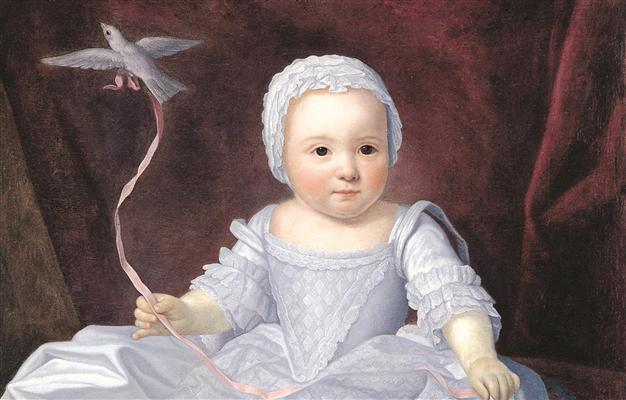Portraits depict golden children of Europe
ISTANBUL

A Princess Dressed in White with a Dove.
The Suna and İnan Kıraç Foundation of Pera Museum will present an exclusive selection from Spain’s Yannick and Ben Jakober Foundation’s Portraits of Children Collection titled “Golden Children: 16th and 19th Century European Portraits.”The exhibition, composed of 55 stunning portraits of children, explores the world of royalty and aristocracy from different European countries and generations. A portrait of Cameria (Mihrimah), daughter of Sultan Süleyman the Magnificent and Hürrem Sultan, from the Jakober Foundation’s Collection as well as a portrait of Prince Abdürrahim Efendi, an Ottoman prince from the Suna and İnan Kıraç Foundation’s Orientalist Painting Collection, have been added to the exhibition as figures representing the Ottoman Dynasty.
The subjects of the paintings were notable royalty or aristocracy and the court portraits circulated in Europe to bring about marriages that would often change the course of history. There are also some provincial and naïf works, but all give viewers a deeper insight into the past. Whether these children are English, Italian, Danish, Spanish, German, Polish, Flemish, Dutch or French, beneath all the trappings of their sumptuous attire – fine lace, jewels and protective amulets – the portraits depict the early years of historical figures.
The story of the Spanish collection began in the 1970s when Yannick Vu was able to acquire a painting titled “Girl with Cherries” by the Mallorquin painter Juan Mestre I Bosch (1826-1893). What was at first considered decorative art for he and his wife soon became a passion that evolved into a collection of more than 160 portraits of children.
“Golden Children, 16th - 19th Century European Portraits” reflect the time and geographical areas it represents, giving viewers the opportunity to contemplate not only European political history through some of its protagonists over the course of four centuries but also a look into the traditions, superstitions, symbolic language, strategies of representation and the fashions of each era and each country.
“If collecting is the act of bringing things together, then the collector is the person who reunites what has been dispersed by the passage of time, thus putting some order in the world that surrounds him.
The search for an object is born out of the collector’s own concerns and experience and for him or her building up a collection is basically about trying to find the link between all the pieces he has chosen.
Collecting can be a passionate game or a neurosis, a way of denying death. If the collector is also an artist, he or she can use the collection as another form of creativity. Perceiving or discovering a common element among so many forms of expressions in the work of those who preceded him, somehow becomes his or her own vision,” Vu said of his collection.
The exhibition, which opened on Oct. 13, will be on display until Jan. 6, 2013.
Educational programs for children
The Pera Museum is also offering educational programs for children between the ages of 4 and 14. The programs “Golden Children” and “Art for Two” offer children the opportunity to closely study the collection. After learning about the classical childrens portraits and contemporary art, children can use their creativity and the insights they gathered from the exhibition during the workshops. Children will also have the opportunity to develop their own projects using different materials and techniques under the guidance of artist and instructor Leyla Sakpınar.
















